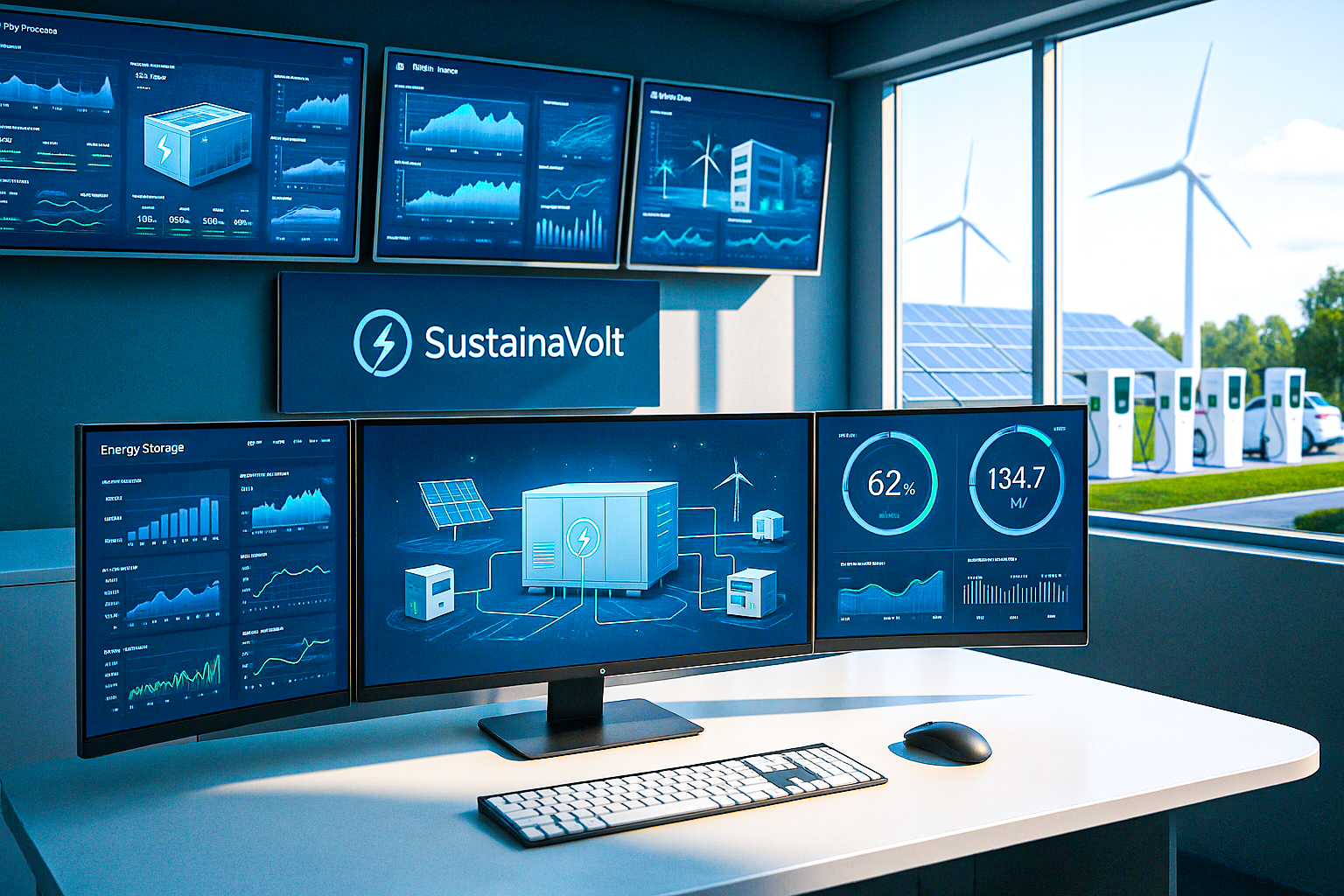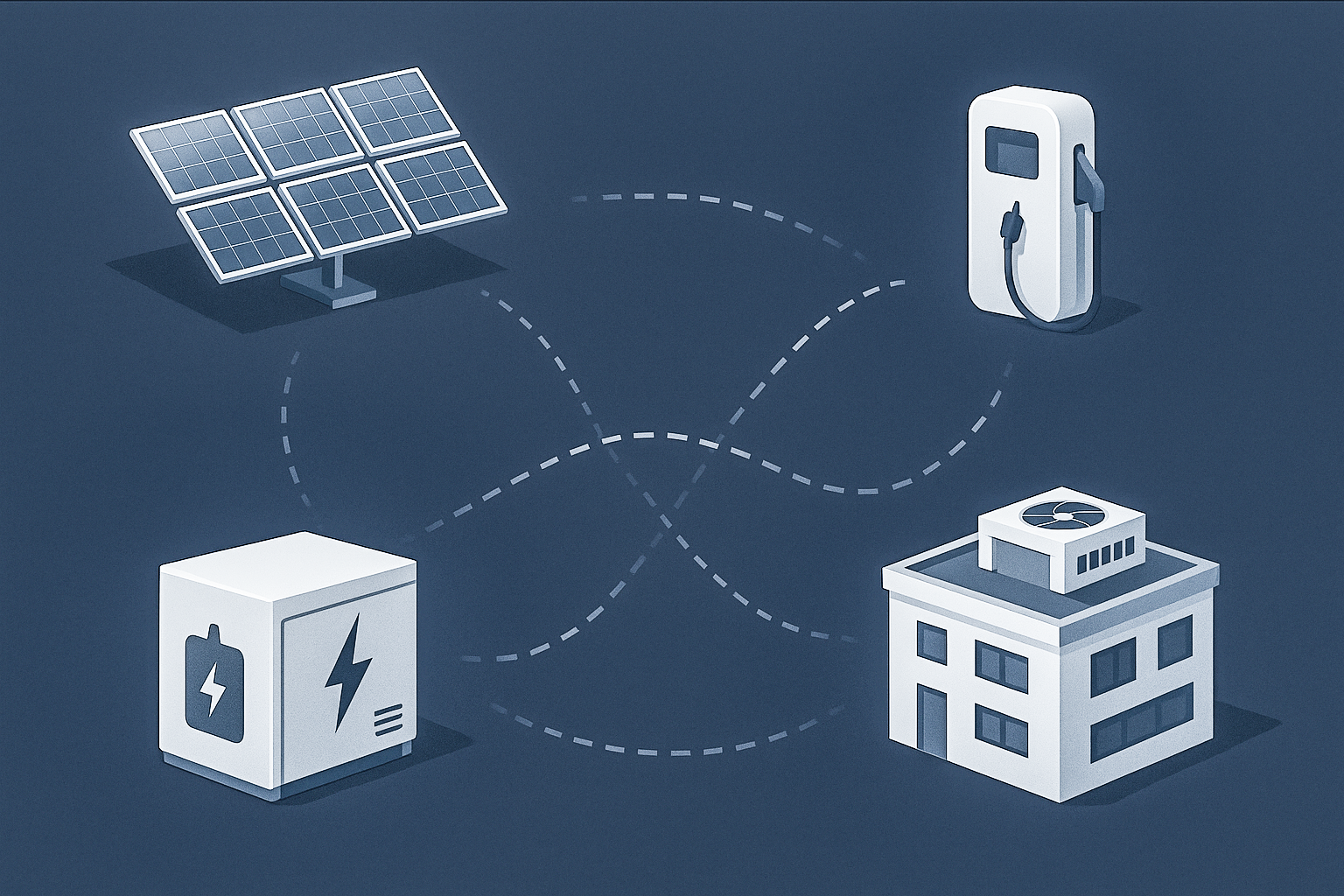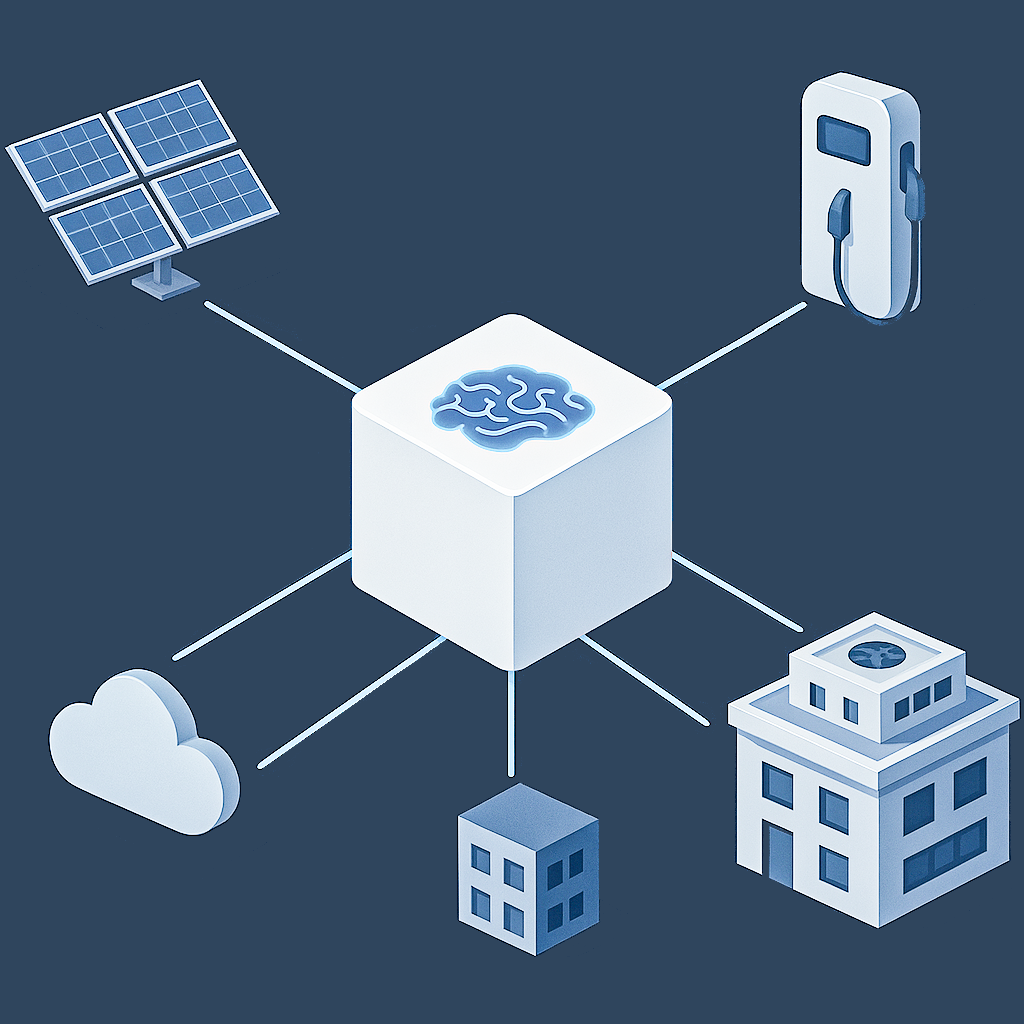SustainaVolt: AI-Driven Energy Orchestration
Empowering the Future of Distributed Energy

SustainaVolt delivers an AI-native platform and integrated ESS hardware, transforming distributed energy systems into self-optimizing, intelligent networks. Our technology enables real-time, autonomous control across energy storage, solar, HVAC, EVs, and more—maximizing revenue, resilience, and efficiency for asset owners and operators.
The Problem: An Orchestration Gap in Distributed Energy
- Energy systems are decentralizing. Over $1T will be invested in distributed energy by 2030, but infrastructure remains static and siloed.
- Assets are disconnected. ESS, PV, HVAC, and EVs aren’t unified or market-integrated.
- Operators lack tools. Manual, static control limits revenue and efficiency.


The Solution: Unified AI Platform + Edge-Controlled ESS
- Flagship Product: 2.5 MWh containerized ESS with embedded edge and cloud intelligence—deployable, scalable, and resilient.
- Core Capabilities: Real-time forecasting, autonomous dispatch and bidding, adaptive learning, cross-asset control.
- Built for: Independent Power Producers (IPPs), microgrids, C&I users, aggregators, and OEMs.
Technology Highlights
- Edge + Cloud Control: Modular, hardware-agnostic, API-first.
- AI Optimization: From on-site agents to fleet-wide cloud core.
- Market Automation: AI-driven trading, dynamic hedging, smart contracts.
- Security & Trust: Open protocols, verifiable messaging, optional tokenization.

Solution
This platform delivers a comprehensive, modular solution for orchestrating energy and resource infrastructure in a fast-changing world.
It combines edge-based autonomy, AI-driven forecasting and optimization, and market-integrated control across various assets, industries, and commodities. Built for flexibility, it supports both small-scale deployments and large enterprise fleets, enabling scalable intelligence without vendor lock-in or manual overhead.


Key Benifits
Key benefits include:
- Unified orchestration across diverse energy assets and systems
- Real-time optimization of cost, carbon, resilience, and compliance
- Seamless participation in electricity, thermal, and flexibility markets
- Full lifecycle support: planning, simulation, dispatch, and reporting
- Compatibility with global protocols, business systems, and regulatory frameworks
Whether deployed for batteries, HVAC, fleets, CHP, or integrated city infrastructure, the platform serves as a high-leverage control layer, turning operational complexity into strategic advantage.
It is ready to support energy operators, asset owners, integrators, and technology partners seeking a more innovative, more autonomous way to manage modern infrastructure.
